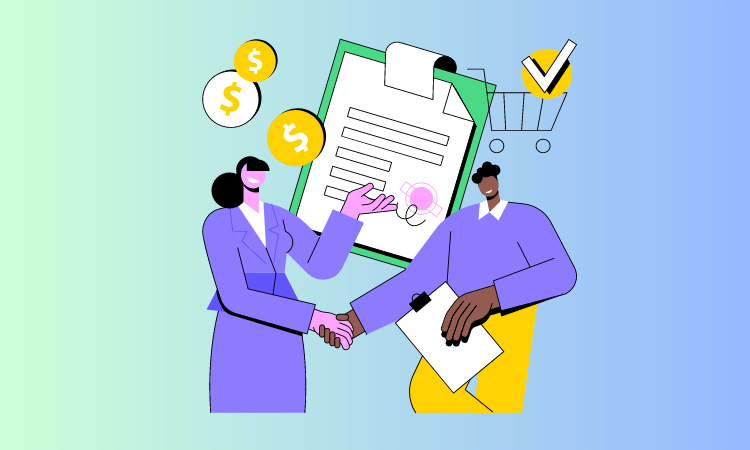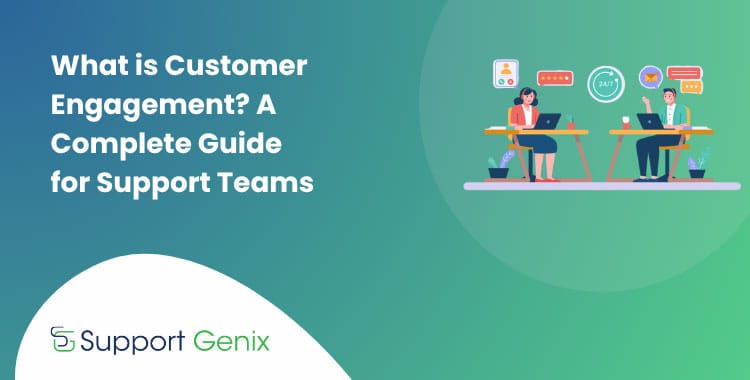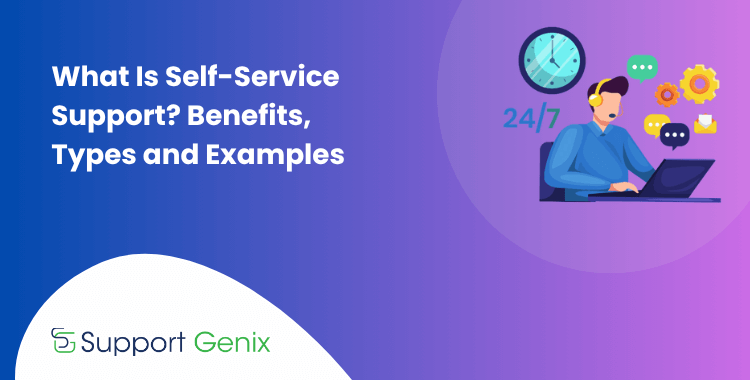What Is a Service Level Agreement?: A Complete Guide
Would you like to know what is a service level agreement and how it can benefit your business? A service level agreement (SLA) is an important document that outlines the rights and responsibilities of both a provider and a client.
It also sets out the agreed-upon expectations for the services being provided, making it essential for any business relationship. In this guide, we’ll explore what constitutes a service level agreement and why they are so important.
The Importance of a Service Level Agreement
If you run a business that relies on technology, you’ve probably heard of a Service Level Agreement (SLA). But what is a Service Level Agreement, and why is it important? At its core, an SLA is an agreement between a service provider and their customer that outlines the level of service that can be expected.

The Importance of a Service Level Agreement:
- Clear Expectations: A Service Level Agreement (SLA) helps define clear expectations between the service provider and the customer. It outlines the scope of services to be provided, the quality standards, and the timeframe for delivery.
- Performance Measurement: An SLA establishes measurable performance indicators, such as response time, resolution time, and uptime. This allows both parties to monitor and evaluate the service provider’s performance against the agreed-upon targets.
- Risk Mitigation: By outlining specific terms and conditions, an SLA helps mitigate risks for both the service provider and the customer. It helps to identify potential challenges and sets out procedures for resolving issues and minimizing disruptions.
- Dispute Resolution: In case of disagreements or disputes, an SLA provides a framework for resolving conflicts and ensures that both parties have a clear understanding of their rights and obligations.
- Resource Planning: An SLA assists in effective resource planning and allocation. It helps the service provider allocate the necessary manpower, tools, and infrastructure to meet the agreed-upon service levels, contributing to efficient service delivery.
- Accountability and Transparency: With an SLA in place, both parties are held accountable for their responsibilities. It promotes transparency by clearly defining roles, responsibilities, and consequences for non-compliance. This fosters trust and ensures that each party fulfills its obligations.
- Continuous Improvement: An SLA encourages ongoing improvement by setting performance benchmarks and targets. Regular performance reviews allow the service provider to identify areas for enhancement and work towards optimizing service delivery.
- Communication and Collaboration: An SLA promotes effective communication and collaboration between the service provider and the customer. It establishes a platform for open dialogue, allowing both parties to address concerns, provide feedback, and make necessary adjustments to ensure mutual satisfaction.
- Customer Satisfaction: A well-defined SLA contributes to customer satisfaction by ensuring consistent and reliable service. It sets the foundation for a positive customer experience, as customers know what to expect and can hold the service provider accountable for meeting their needs.
- Competitive Advantage: An SLA can serve as a competitive differentiator for a service provider. By offering well-defined service levels and demonstrating a commitment to meeting or exceeding customer expectations, businesses can differentiate themselves from competitors and attract new customers.
Support Genix
WordPress Support Ticket Plugin
Take Your Customer Support to The Next Level and Boost Customer Satisfaction Rates
Key Components of a Service Level Agreement
When it comes to entering into a service level agreement (SLA), understanding the key components is critical. As the service provider, successfully delivering on SLA expectations is crucial to building and maintaining trust with customers.
While SLAs may differ depending on the industry, vendor, and service type, there are several essential aspects that make up a standard service level agreement:
- Service Description: Clearly defines the services to be provided, including the scope, limitations, and deliverables.
- Service Level Objectives: Specifies the measurable performance targets and metrics that the service providers must meet.
- Performance Measurement: Outlines how the service provider’s performance will be measured, monitored, and reported.
- Response and Resolution Timeframes: Defines the expected timeframes for acknowledging and resolving service requests or incidents.
- Uptime and Availability: Specifies the required level of system availability and uptime for essential services.
- Escalation Procedures: Outlines the escalation process for handling critical issues or complaints that require higher-level intervention.
- Roles and Responsibilities: Clearly define the responsibilities and obligations of both the service provider and the customer.
- Change Management: Describes the procedures for managing changes to the services, including notifications, approvals, and impact assessments.
- Problem Resolution: Outlines the process for identifying, investigating, and resolving service-related problems or issues.
- Reporting and Communication: Specifies the frequency and format of reports, as well as the channels of communication between the parties.
- Remedies and Penalties: Defines the remedies or penalties in case of service failures or non-compliance with the SLA.
- Termination and Renewal: Outlines the conditions for terminating or renewing the agreement, including notice periods and renewal terms.
- Confidentiality and Security: Address the confidentiality and security requirements for handling sensitive information or data.
- Dispute Resolution: Provides a framework for resolving disputes or disagreements between the service provider and the customer.
- Review and Amendment: Specifies the frequency and process for reviewing and amending the SLA to ensure its relevance and effectiveness.
Types of Service Level Agreements
When it comes to Service Level Agreements or SLAs, there are three types to consider:
The first is the Customer SLA, which establishes an agreement between an organization and a third-party service provider. This type of SLA is similar to a contract between the two parties, specifying what services will be provided and at what level of quality.
The second type of SLA is the Internal SLA, which sets expectations between teams within an organization. This is often useful in ensuring that the teams are aligned in their goals and working collaboratively.
Finally, there’s the Multi-Level SLA, which covers agreements between multiple parties. This can include an organization and multiple vendors, more than two teams within an organization, or a vendor providing services to customers with different service plans.
By understanding the different types of SLAs, you can ensure that your organization’s service agreements are clear, efficient, and effective.
Steps to Write a Service Level Agreement
A service level agreement (SLA) is an essential document that helps businesses ensure their services are meeting certain standards. By following these simple steps, you can create a comprehensive and effective SLA that will enhance your user experience.
Define the Services
First and foremost, you’ll need to be crystal clear about the service you’re outlining in the document. This includes identifying all stakeholders involved and their points of contact, as well as the customer and vendor obligations. But why does all of this matter?
Simply put, a well-written SLA can help establish expectations and accountability for all parties involved, which can ultimately improve the user experience. So, take the time to define your service properly and ensure that it covers everything from the specific services provided to the conditions for canceling the agreement.
Verify service levels
When it comes to creating a service level agreement, it’s essential to ensure that the service levels agreed upon are clearly defined and measurable. Service levels are the standard by which the performance or output of a service can be judged. For instance, a customer service call center may consider the average call waiting time as a service level.
Similarly, a bakery could measure its service level by the number of pastries they supply daily. Service levels should be appropriate for your business and its unique service offering. To verify the deliverables and deadlines, it’s crucial to engage with key stakeholders to ensure that the agreed-upon service levels are achievable and quantifiable.
Determine performance metrics
When it comes to drafting a service level agreement, outlining performance metrics is crucial. This step not only helps define expectations but also provides stakeholders with a means of measuring a service’s success. Among the metrics commonly included in SLAs are the quality of output, defect rates, and the cost of meeting goals.
But it’s important to keep in mind that customers may have additional metrics they would like to see included. For instance, some IT customers may request that business process metrics be incorporated into the agreement by using key performance indicators that it already uses to determine success. Security is another factor that should never be overlooked.
Prepare the service level agreement document
To ensure that all parties involved have a common understanding of the level of service being provided, it is essential to have a properly written SLA document. The first four steps of this process provide you with sufficient data and information that can help you prepare a thorough SLA document.
When preparing the document, ensure that it provides a comprehensive description of the services, their metrics and performance standards, dispute resolution procedures, and measures of accountability. When properly constructed, the SLA serves as a guiding reference for stakeholders and helps to align expectations for optimal user experience.
Review the SLA with all stakeholders
When writing an SLA, it’s important to involve all stakeholders in the process and gather their feedback before finalizing the agreement. This ensures that all parties agree to every detail outlined in the SLA and can confidently meet the expectations set out in the agreement. Once all stakeholders have reviewed and approved the SLA, it’s important to gather signatures and distribute the final agreement.
By following these five steps, businesses can create an SLA that ensures a positive user experience for their customers.
Best Practices of Service Level Agreement
Service level management is essential for any business to ensure customer satisfaction and functionality. To achieve the best outcome, it is important to follow best practices that guarantee the success of service level agreements (SLAs).
- First, it is vital to have the agreement of all stakeholders before the service delivery begins.
- Second, designing an SLA with the end users in mind ensures their needs and desires are met.
- Third, setting realistic and achievable service levels.
- Fourth, reserving time to review the SLA after the service delivery begins to make any necessary adjustments.
- Fifth, using precise terms to define the parameters of the service, performance metrics, and conditions can help stakeholders understand the SLA.
Adhering to these best practices will ensure the success of service level management in any business.
Frequently Asked Questions
Who is involved in a Service Level Agreement?
The main parties involved in a Service Level Agreement are the service provider, who delivers the services, and the customer, who receives the services. Other stakeholders may include managers, support staff, and relevant departments from both sides.
How do you measure performance in a Service Level Agreement?
Performance in a Service Level Agreement is typically measured using specific metrics, such as response time, resolution time, uptime, availability, customer satisfaction ratings, and other relevant key performance indicators (KPIs). These metrics are used to assess the service provider’s performance against the agreed targets.
What happens if the service provider fails to meet the agreed-upon service levels?
If the service provider fails to meet the service levels stated in the Service Level Agreement, there may be remedies or penalties outlined in the contract. These could include financial compensation, service credits, extended service periods, or other forms of resolution as agreed upon between the parties.
Are Service Level Agreements only for IT services?
While Service Level Agreements are commonly associated with IT services, they can be used for various types of services, including but not limited to software development, cloud services, telecommunications, consulting, maintenance, and support services.
Can a Service Level Agreement be terminated before its expiration date?
Yes, a Service Level Agreement can be terminated before its expiration date if both parties agree to it. The termination conditions and notice periods for early termination are typically defined in the SLA itself.
Support Genix
WordPress Support Ticket Plugin
Take Your Customer Support to The Next Level and Boost Customer Satisfaction Rates
Conclusion – The Role of Service Level Agreements in Business Success
In today’s competitive market, business success is crucial to stay ahead of the game. A Service Level Agreement (SLA) plays a significant role in achieving this success. But what is a Service Level Agreement?
In simple terms, it is a contract between service providers and their customers, outlining the agreed-upon level of service. It sets expectations, defines metrics, and provides a framework for accountability in meeting those standards. A well-crafted SLA can help businesses mitigate risks, increase transparency, and improve customer satisfaction.
It ensures that the business is delivering what it promised and customers are receiving the value they deserve. In conclusion, investing in a sound SLA can go a long way in driving business success and building a loyal customer base.


